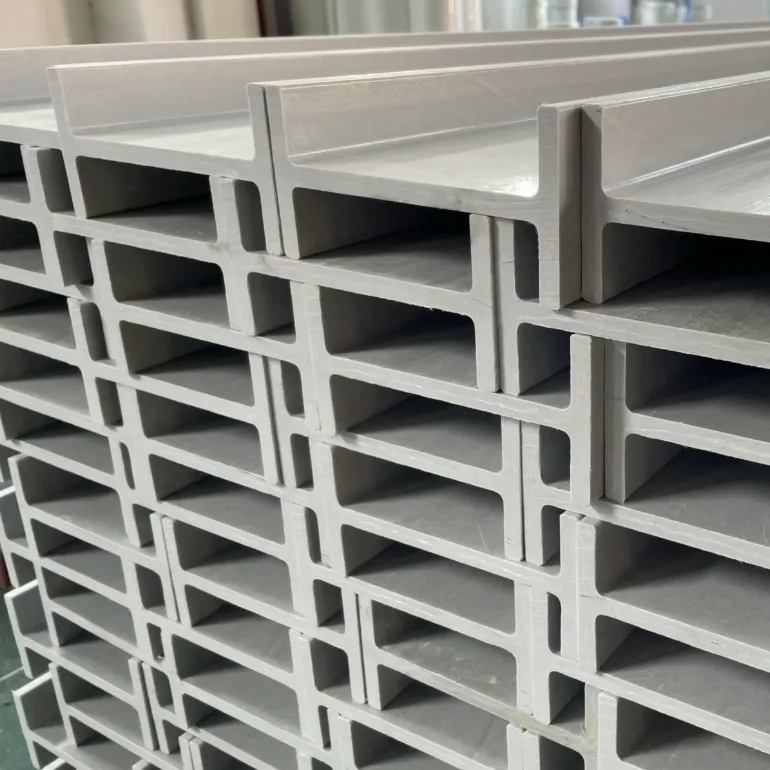loading...
- No. 9, Xingyuan South Street, Dongwaihuan Road, Zaoqiang County, Hengshui, Hebei, China
- admin@zjcomposites.com
- +86 15097380338
- Welcome to visit our website!
Advancements in Fiber Reinforced Polymer Bars for Construction Applications and Structural Integrity
The Role of FRP Reinforcement Bars in Modern Construction
In the rapidly evolving construction industry, the demand for innovative materials that offer improved performance and durability has led to the increased use of Fiber Reinforced Polymer (FRP) reinforcement bars. These bars, commonly known as FRP rebar, are composite materials made from a polymer matrix reinforced with fibers, such as glass, carbon, or aramid. They present significant advantages over traditional steel reinforcement bars, making them a popular choice in various applications.
1. Advantages of FRP Reinforcement Bars
One of the most notable benefits of FRP rebar is its excellent resistance to corrosion. Unlike steel, which can rust and deteriorate when exposed to moisture and chemicals, FRP bars maintain their integrity even in harsh environments. This characteristic makes them particularly suitable for structures exposed to seawater, de-icing salts, and other corrosive agents, such as those found in marine or industrial applications. Consequently, using FRP bars can significantly extend the lifespan of structures, reducing the need for costly repairs and maintenance.
Additionally, FRP reinforcement bars have a lower density than steel, making them much lighter. This reduces the overall weight of concrete structures and can lead to savings in transportation costs and handling during construction. Moreover, the installation process becomes more efficient due to the ease of cutting and bending these bars, which can be tailored to meet specific design requirements.
2. Enhanced Mechanical Properties
FRP rebar exhibits specific mechanical properties that are advantageous in construction. Its high tensile strength and flexibility allow it to withstand significant loads without the risk of failure. The non-metallic nature of FRP also provides a degree of thermal expansion compatibility with concrete, which can help to mitigate issues associated with temperature fluctuations.
Another critical mechanical property of FRP bars is their electromagnetic neutrality. Unlike steel reinforcement, which can interfere with magnetic fields, FRP bars are non-magnetic. This makes them ideal for construction in environments sensitive to magnetic interference, such as hospitals or in applications involving sensitive electronic equipment.
3. Environmental Considerations
frp reinforcement bars

The construction industry is increasingly prioritizing sustainable practices, and FRP reinforcement bars align with these goals. Their production generates less waste and consumes fewer resources compared to traditional materials. Furthermore, the longevity and corrosion resistance of FRP can lead to less frequent replacements, ultimately reducing the environmental impact over the life cycle of a project.
Additionally, FRP rebar is often manufactured using recyclable materials, contributing further to sustainability efforts in construction. As global emphasis on reducing carbon footprints grows, the adoption of materials like FRP becomes increasingly essential for meeting regulatory standards and public expectations regarding environmental responsibility.
4. Challenges and Limitations
Despite their numerous advantages, the adoption of FRP reinforcement bars is not without challenges. One of the primary concerns is their higher initial cost compared to traditional steel reinforcement. Although the long-term savings associated with reduced maintenance and increased lifespan can offset this initial investment, many construction teams may still hesitate to make the switch without clear long-term projections.
Moreover, there is a learning curve associated with the use of FRP rebar, as it requires specialized knowledge for proper installation and design integration. Engineers and contractors must be adequately trained to understand the unique properties and performance characteristics of FRP materials to ensure their effective application in modern construction projects.
5. Future Prospects
The future of FRP reinforcement bars in construction is promising. Ongoing research and development efforts aim to enhance the performance characteristics of FRP materials, reduce costs, and broaden their applicability. Innovative products, including hybrid systems that combine FRP with other materials, are likely to emerge, offering even greater advantages.
As the construction industry continues to evolve, the integration of advanced materials like FRP rebar will play a crucial role in creating more resilient, durable, and sustainable structures. By embracing these innovations, builders and engineers can ensure that their projects meet the demands of present and future generations, paving the way for a more efficient and environmentally conscious construction landscape.
In conclusion, FRP reinforcement bars stand as a testament to the advancements in material science within the construction industry. Their unique properties and benefits make them an exciting option for modern engineering, pointing toward a future where construction practices are not only more efficient but also environmentally sustainable.
-
GRP Structures: The Future of Lightweight, High-Performance EngineeringNewsJun.20,2025
-
FRP Water Tank: High-Performance Storage for Corrosive and Clean Water SystemsNewsJun.20,2025
-
FRP Square Tube: The New Industry Standard for Chemical and Structural ApplicationsNewsJun.20,2025
-
FRP Pultruded Profiles: The Ultimate Choice for Lightweight Structural StrengthNewsJun.20,2025
-
FRP Handrails: The Safer, Smarter, and Stronger Choice for Modern InfrastructureNewsJun.20,2025
-
FRP Grating: The Smart Solution for Durable, Lightweight Industrial FlooringNewsJun.20,2025
-
Why Choose a Galvanized Water Tank for Your Storage NeedsNewsMay.21,2025
